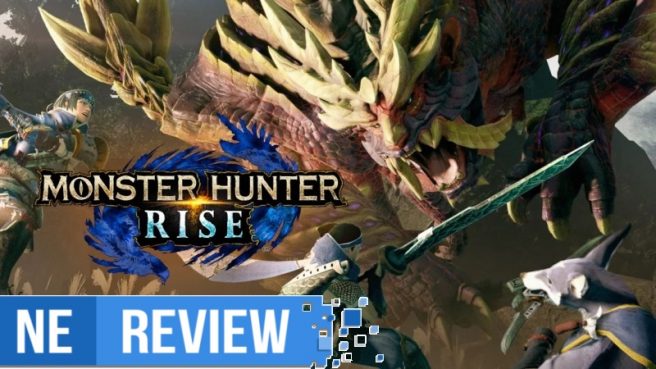[Review] Monster Hunter Rise
Posted on March 23, 2021 by Amit Dhindsa(@Agnezenn) in Reviews, Switch
System: Switch
Release date: March 26, 2021
Developer: Capcom
Publisher: Capcom
Monster Hunter Rise has been a long time coming. With the continued success of the series on 3DS and the immediate, roaring success of Switch as a handheld and home console hybrid both in Japan and around the globe, a new entry in the series early in the console’s life cycle seemed like a given. While the system did receive an enhanced port of Monster Hunter Generations awhile back, the original Monster Hunter so many expected eluded the system for a number of years. Now finally, four years later, Monster Hunter Rise is set to deliver on those expectations.
Monster Hunter Rise begins with your hunter’s friends, Hinoa and Minoto, meeting them in their home in Kamura Village. The twins quickly escort the hunter to Fugen, the boisterous leader of the village, who delivers a dire message: there are signs their home is once again under threat from The Rampage, a disaster brought on by countless monsters attacking the village in a frenzy, with the last catastrophe nearly destroying the village fifty years ago. Your hunter is tasked with playing a key role in investigating and ultimately defending Kamura Village from The Rampage, and this serves as the backdrop for Monster Hunter Rise’s narrative.
The home you seek to protect, Kamura Village, acts as the base of operations for your hunter similar to previous entries in the series. In addition to your hunter’s abode, where you can change your armor and weapons and craft items, it’s home to a number of people and places who will help you on your journey: Yomogi, the cheerful chef, will grant you various boons with her pre-hunt meals, Hamon the Blacksmith plays the key role of crafting armor, weapons, and upgrades as you collect materials, and Iori is your go-to for all your Buddy related needs. There are many more colorful characters you will interact with regularly in Kamura Village, whether it’s to access more gameplay mechanics or to accept side quests, but none more so than Hinoa the Quest Maiden and her sister Minoto the Hub Maiden.
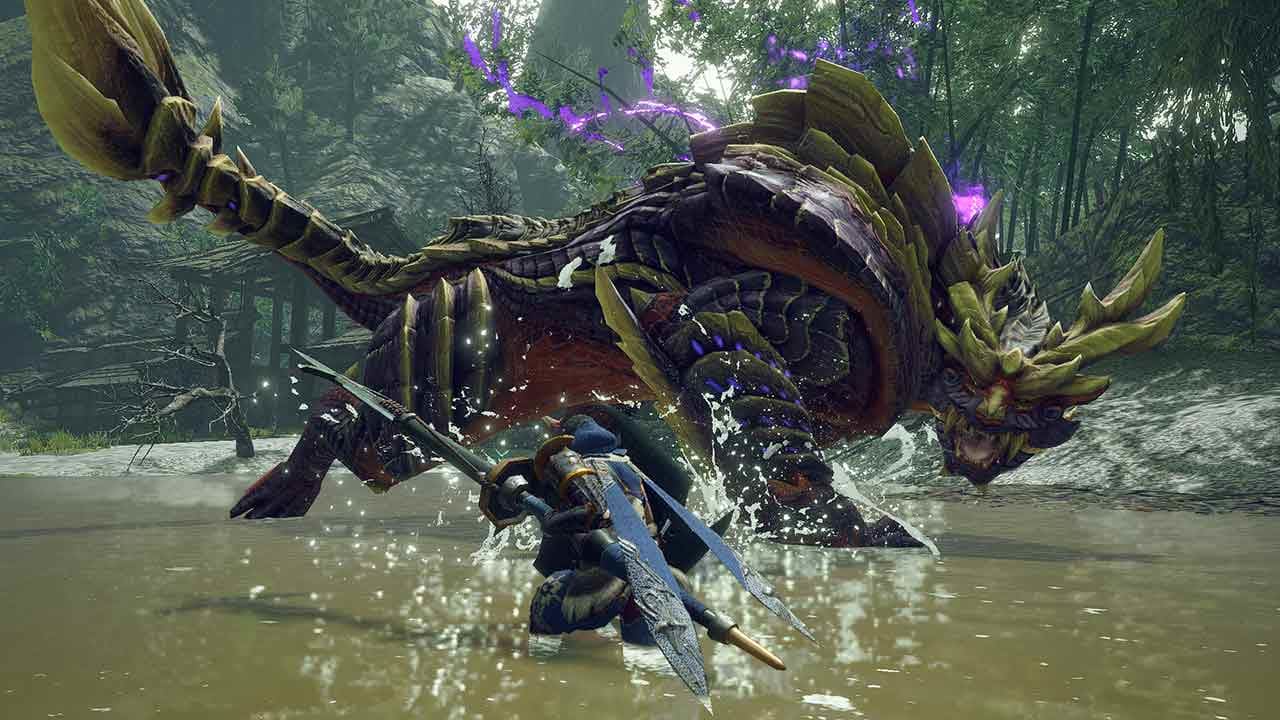
The quests in Monster Hunter Rise are largely divided into two streams: Village Quests and Hub Quests. Village Quests come from Hinoa and serve as the story beats for Monster Hunter Rise; in addition, village requests are also where you will find side quests accepted from other villagers. Hinoa’s twin, Minoto, is responsible for handling the Hub Quests in The Gathering Hub, which make up the multiplayer quests in the game. In both cases, there’s plenty of variation as well as Expedition Tours where players can freely roam an area without a given target. However, in order to increase your Hunter Rank, you must complete important quests at each level known as Key Quests.
Key Quests in Monster Hunter Rise involve taking down large monsters, the most fearsome beasts the game has to offer. Completing a set number of these will allow you to enter the next Hunter Rank and its respective quests. Hunter Rank is the main measuring stick of progress in Monster Hunter Rise: you can be sure to find more challenging foes the higher your rank climbs. While the rank for Village Quests and Hub Quests is typically increased separately, special Village Quests known as Special License Tests will allow you to increase your hub quest rank through the Village Quest path. For those who want to see how the story in Monster Hunter Rise unfolds and play through the Village Quests first, Special License Tests are a great boon, as you will come across the same monsters from Village Quests in low rank Hub Quests.
That being said, while you might find yourself facing off against the same monsters in both quest branches, it’s not a straightforward repeat in Hub Quests. The attack patterns and general flow of the battle are similar, however, because Hub Quests are balanced for multiplayer, the same monsters have significantly more health on this side of the game. Hub Quests can still be challenged and cleared solo, but be prepared for the fight to last longer than it would in a Village Quest. On the other hand, if you want to tackle Hub Quests with others online, look to a helpful Palico in Kamura Village named Senri the Mailman.
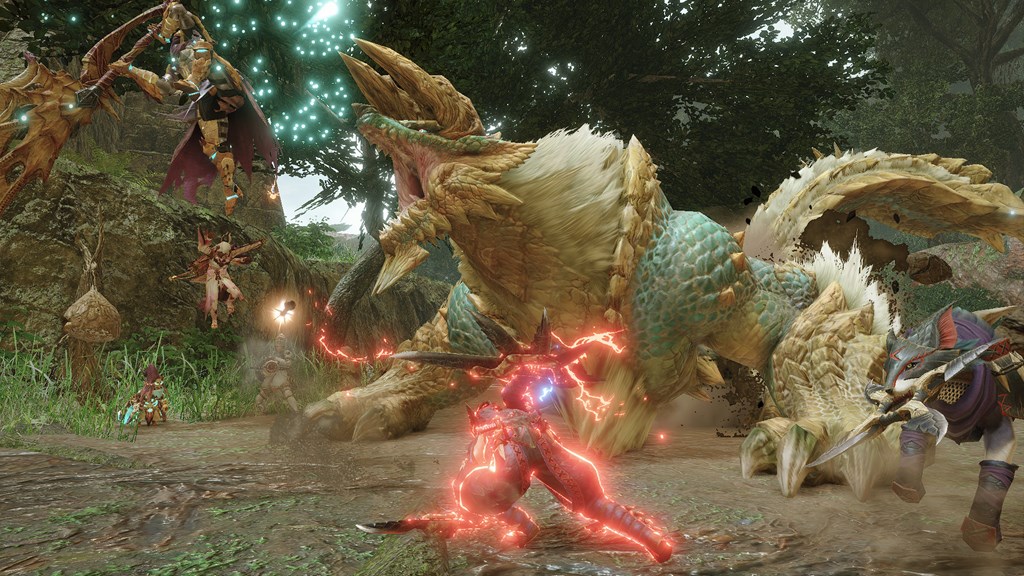
Senri plays the pivotal role of facilitating online play in Monster Hunter Rise. With his assistance, players can create a lobby with their desired criteria or, alternatively, look for a suitable lobby someone else has made. For those looking to play with their friends or a specific group of people, creating a lobby will also generate a code that can be shared with others. Finally, after players join the lobby and congregate in The Gathering Hub, they can post and accept quests, gear up for the task at hand, and partake in some pre-hunt Dango together before heading out. It can take a bit of work to set up, but the process of playing online is fairly smooth once the lobby is created, and there were no significant issues I ran into while playing with others.
Whether it’s online or solo, once players are out on a quest, they’ve gotten into the real meat of Monster Hunter. There are several types of quests, including objectives where players are tasked with gathering a requisite amount of materials, ones with the goal of defeating a given number of small beasts, and Expedition Tours, which can be used to freely hunt several monsters and gather material for crafting without a quest goal. However, hunting large monsters in the aforementioned Key Quests is where most players will spend the majority of their time with the game. Once you’ve accepted the challenge and come face-to-face with one of these beasts, the excitement begins.
Large monsters hit hard, inflict nefarious status ailments, and evolve as the fight progresses. It’s best to treat these encounters similarly to boss fights in other hard-nosed action games: a measured approach is necessary, especially in the beginning as it displays its attack patterns, and once an opening presents itself, capitalizing on it is vital. Preparation is half the battle, and it’s entirely possible to effectively lose a fight before taking a single swing if players show up without the right gear and items. The dynamic nature of these battles is where a large part of Monster Hunter’s appeal lies.
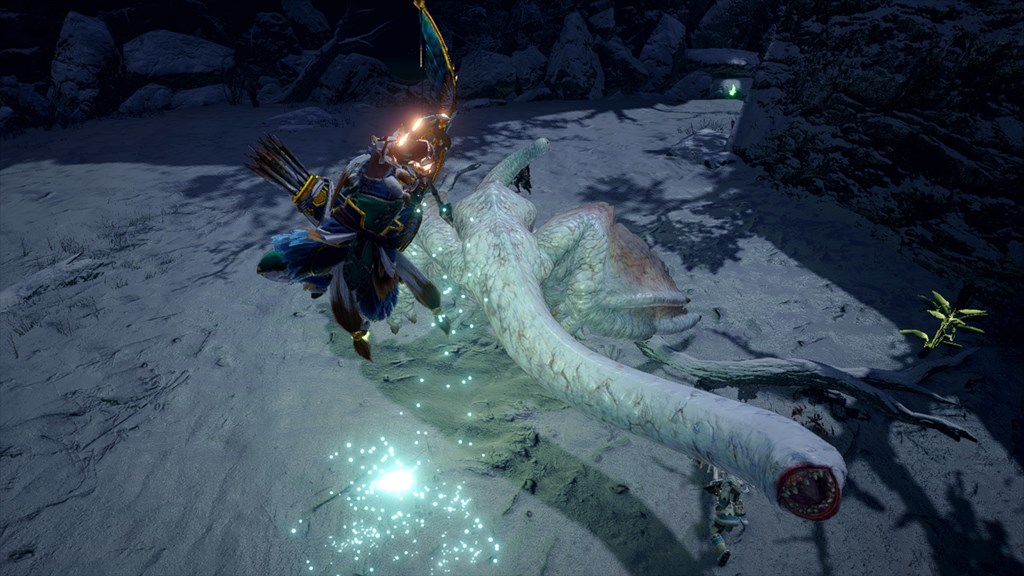
At first, it can seem daunting and downright impossible to succeed after getting utterly smacked around in the first few exchanges, but landing the final blow and overcoming these nightmarish beasts in a hard fought battle is a feeling of satisfaction almost unique to Monster Hunter. The spoils after finally felling a large monster are equally rewarding: when the monster is down once and for all, players can collect various materials from it. Coupled with material collected from the environment, quest rewards, and smaller monsters, these materials are used to craft and upgrade gear back in Kamura Village, and this serves as the core gameplay loop for Monster Hunter Rise: defeat monsters to craft and upgrade gear, so you can take on more powerful monsters, and craft gear from those monsters to take on even more powerful monsters after that. It’s a tried and true RPG formula, but coupling it with Monster Hunter’s depth, tight and engaging gameplay, and spectacle is ultimately what makes the series so special.
Monster Hunter is known as much for its difficulty as it is its enthralling gameplay loop, and the learning curve is still high in Rise. Newcomers will be introduced to a multitude of mechanics and information right from the start. Capcom has done a good job putting helpful resources, tutorials, and safe spaces to learn and experiment in the game, but it can still be a lot to take in at the beginning, and Monster Hunter by its nature requires players to be more thoughtful and deliberate than most action games, which can be another area of adjustment for some.
All that being said, players are not asked to put tons of hours into the game before they can start enjoying it: there’s plenty of fun to be had just learning the ropes, and Monster Hunter Rise does a good job easing new players in with the first set of quests. Furthermore, Capcom has continued its trend of trying to make the series more approachable and convenient for newcomers and were largely successful. Palamutes are a great new addition that eliminate the need for hunters to slowly trudge across a map on foot when chasing monsters and allow players to travel much faster while sharpening weapons and using items at the same time. That’s just the tip of the iceberg, too, as Monster Hunter Rise brings with it with many changes that significantly enhance the experience for everyone.
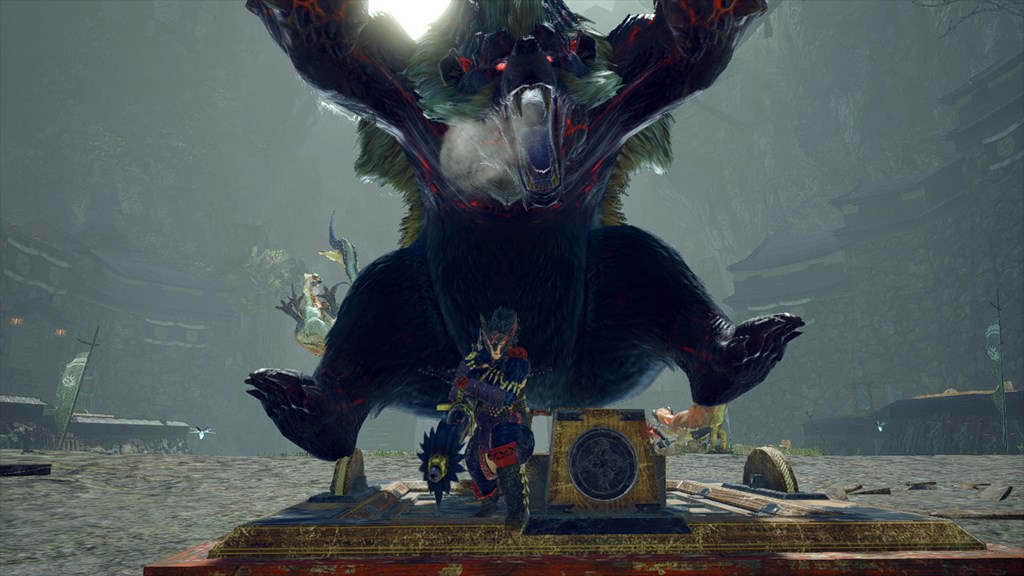
There are several new gameplay additions, and chief among them is the Wirebug, which augments the traditional gameplay in a number ways. Perhaps the most exciting utilization of Wirebugs is Wiredashing, which affords players a myriad of movement options that raises the bar for action in Monster Hunter games. Wiredashing is incredibly flexible: it can be used to escape a great distance from an incoming attack or to recover positioning and get close to a monster again when it’s time to get back on the offensive. It can also quickly get players from the ground to the air, or vice versa, and even dash mid-air. If it sounds tremendously fun and useful, that’s because it is. While there is a decent amount of startup at the beginning of the animation, Wiredashing allows players to cover a great distance fairly quickly, and it honestly just feels cool to do it. Moving in a Monster Hunter game has never felt so fun.
In addition to Wiredashing, Wirebugs also grant players weapon-specific skills called Silkbinds. Silkbinds can be both offensive and defensive techniques. For example, one Long Sword Silkbind launches players towards a monster and grants players two follow up options on a successful hit. Alternatively, the other Long Sword Silkbind acts as a counter with surprisingly long active frames. Silkbinds can also be customized to an extent, as the Long Sword offers an additional offensive technique that can be swapped out with the default attack. Much like Wiredashing, Silkbinds add flavor to traditional Monster Hunter gameplay and make the combat more flashy than it’s ever been.
Wirebugs can prove useful even beyond Wiredashing and Silkbinds: they can be used to vertically traverse terrain during exploration or a chase and to break a fall after being knocked around by a monster. The latter is particularly useful, as players can use it to get right back in the action and forgo a hard knockdown that can leave you at the mercy of a monster for some time.
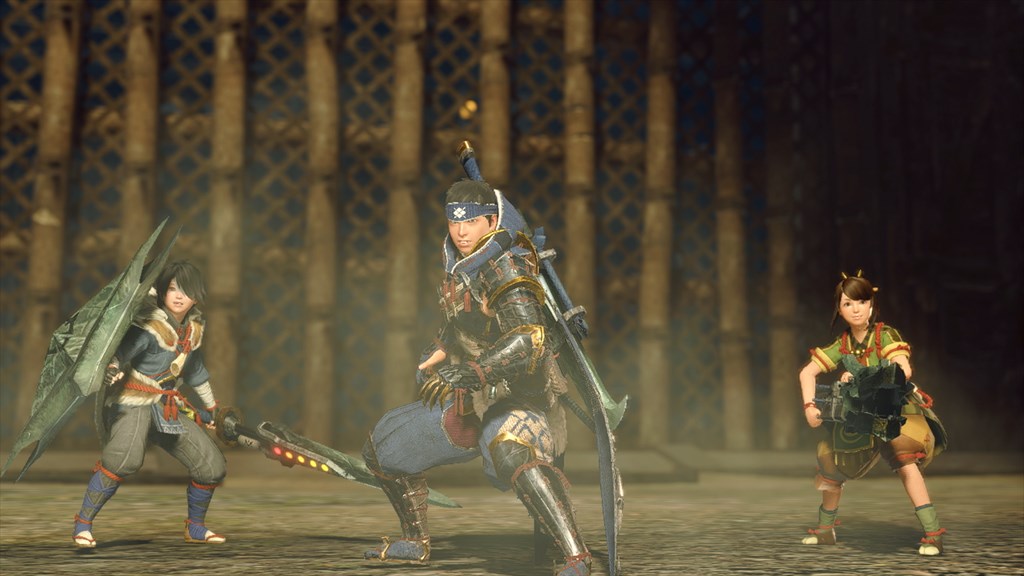
With Wirebugs offering such a tremendous amount of utility, the primary method of balancing their use is through the Wirebug Gauge. Wirebugs are limited to two charges, and while players can add a third charge by capturing a Wirebug in the wild, the boost is temporary. The number of charges required and the speed of their recovery will depend on the Wirebug action being performed, so managing their use is important. The way each person utilizes Wirebugs will vary by weapon and playstyle, but they will no doubt become an integral part of everyone’s arsenal, so it’s a good idea to get familiar with the properties of each ability early on.
In contrast to the sweeping changes the Wirebug mechanic brings to the game, Wyvern Riding becomes available sporadically for a short time but can be equally as exciting. The feature allows hunters to temporarily mount and control a downed beast. While fighting a single large monster, players can mount and launch the monster into an obstacle or a wall to inflict damage. The real party starts when another large monster enters the fray, however. When two large monsters start squaring off and one becomes mountable, players can take control of and use the toppled monster to deal damage to the other monster with no real risk to the hunter. Players can even launch the mounted monster into the monster that’s still standing, knock it over, proceed to then mount that monster, and go Wyvern Riding a second time. It’s yet another way that Monster Hunter Rise spices up the traditional gameplay of the series.
The final major new addition to Monster Hunter Rise largely takes place outside of the standard gameplay in the form of Rampage Quests. Players are tasked with defending Kamura Village from a stampede of creatures in this horde mode by setting up both controllable and automatic Hunting Installations throughout the stronghold. As the monsters destroy barriers and get deeper into the stronghold, players will have to reposition Hunting Installations, as a limited amount can be in play at any given time. As monsters are repelled, however, the Stronghold Level will go up, increasing the number of installations that can be deployed as well as granting players access to new types of installations. As the difficulty ramps up, the scope of the missions, number of waves, and strength of the monsters will increase, eventually leading to a new kind of thrilling action in Monster Hunter with a similar feeling of satisfaction when the final wave is repelled and your home is successfully defended. Rampage Quests are a great way to offer something new in addition to the core Monster Hunter gameplay, and the rewards for completing them is fantastic on top of it.
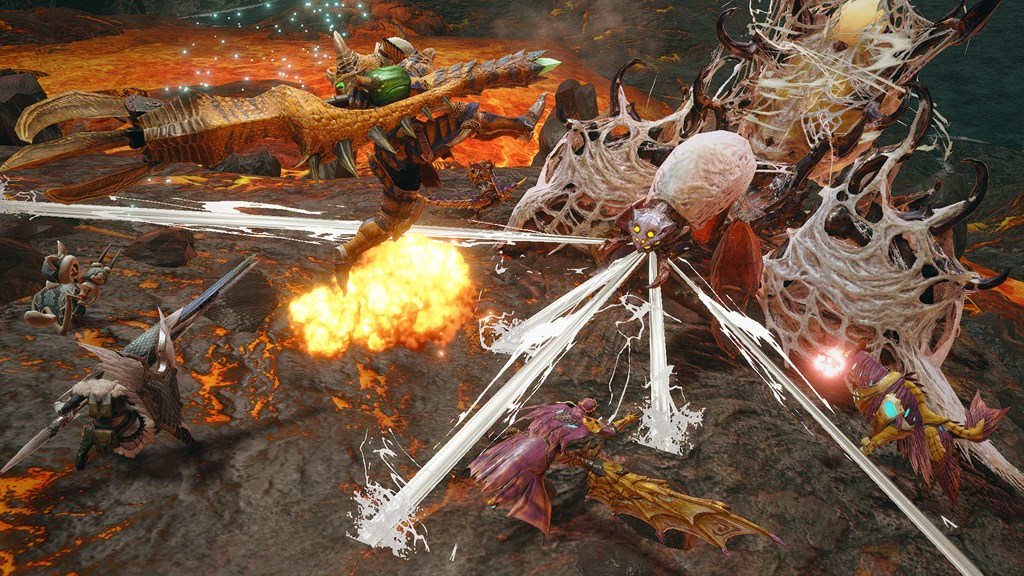
Tying the great gameplay together are the production values, which are impressive across the board. Monster Hunter Rise is one of the most visually impressive games on Switch, both docked and in handheld mode, and performance is generally smooth in single-player as well as online. There were a few instances of notable framerate drops, however, it was only a handful of times in dozens of hours with the game and didn’t last long enough to have an adverse impact on the gameplay. The soundtrack, meanwhile, never misses a beat and only serves to further elevate the game. The music during battles is appropriately high energy, and when finally returning to Kamura Village after a hunt, its tranquil theme really makes it feel like home. The only significant technical issue with the game is that monsters in the background often move at noticeably lower framerates, which can be jarring at times. However, with Monster Hunter Rise pumping out such impressive visuals and having seamless areas, rather than segmented zones, having to make concessions somewhere was almost certainly necessary. Beyond that, a good amount of high quality cutscenes and charming voice acting round out what is a great overall package.
At its core, Monster Hunter Rise is still very much a Monster Hunter game: the learning curve is relatively steep, and the game can be absolutely punishing. That being said, while retaining the spirit of the series, Capcom has done a tremendous job further refining the formula so that some tedious aspects present in previous entries are eliminated and players spend more of their time in the action that makes the series so enjoyable. The action itself feels better than ever too, with the Wirebug offering more fluid movement options as well as exciting new techniques. Furthermore, Rampage Quests are a fun new way to vary the gameplay, and it can’t be overstated how important that depth is in a game where you will spend countless hours with the same core gameplay loop.
The Verdict
While it would not be entirely fair to call it accessible, Monster Hunter Rise is now arguably the best entry point in the series. There’s going to be effort needed upfront if you’re new to the series, but that doesn’t mean that learning the game isn’t fun, and when it finally clicks, your enjoyment is going to reach another level. It’s been a long time coming, but the first original Monster Hunter on Switch was worth the wait, for returning fans and newcomers alike.
Review copy provided by the publisher for the purposes of this review.
